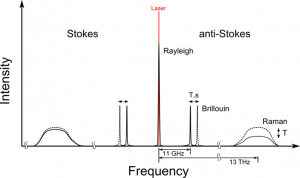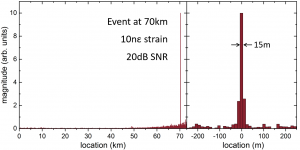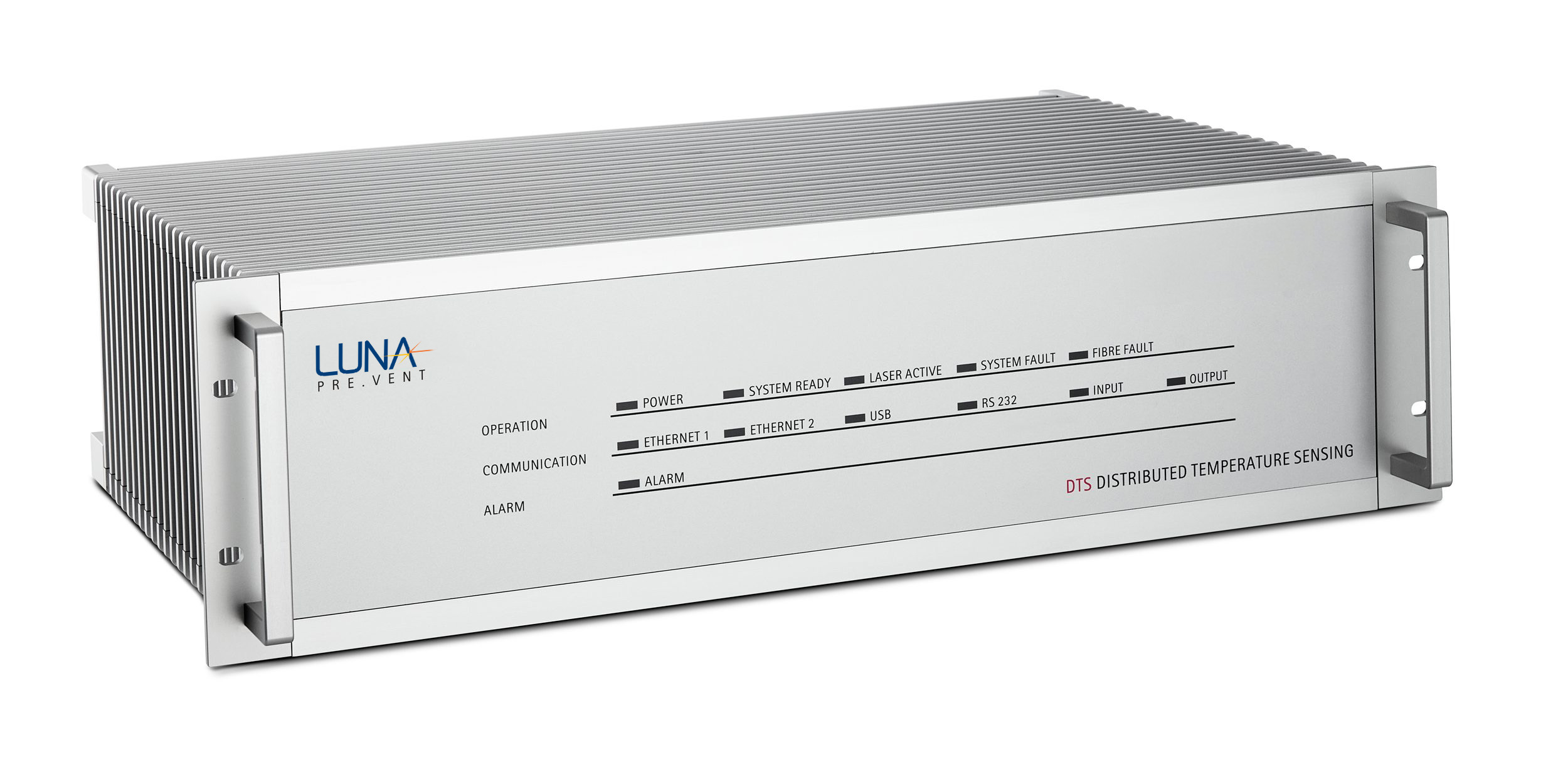Border monitoring made easy with fiber-optic sensing systems
If you want to monitor physical borders, such as walls and fences, a fiber-optic sensing system is ideal.
Such a system uses optical fibers as sensors and makes it possible to measure sound, movement or temperature – continuously and in real-time – along the entire lengths of the fibers.
The sensors are standard, unmodified telecom fibers which have many advantages: They are easy to install, they enable measurements of thousands of locations with one single interrogator, they cover a large geographical range, they are immune to electromagnetic interference, they do not carry any electrical power, and they are highly reliable and cost-efficient.
The interrogator sends light into the fiber and detects the scattered light that comes back while complex algorithms figure out what is going on along the fiber – with high precision. With that in place, we can move on the scattering mechanisms.
Scattering mechanisms
Optical fibers exhibit basically three scattering mechanisms: Rayleigh, Brillouin, and Raman scattering. Each mechanism is suitable for measuring of specific physical parameters (Table 1).
| Scattering mechanism | Optical measurands | Physical parameters |
| Raman | Amplitude (anti-Stokes, Stokes) | Temperature |
| Brillouin | Frequency, Amplitude | Temperature, strain |
| Rayleigh | Amplitude, phase | Dynamic temperature and strain |
Table 1: Optical measurands and physical parameters of scattering processes in optical fibers.
And each scattering mechanism shows a characteristic spectrum (Figure 1).
Figure 1: Schematic representation of the spectral components of scattered light within an optical fiber.
Raman scattering for temperature sensing
Raman scattering is widely used for Distributed Temperature Sensing (DTS) which uses a simple optical filter scheme to measure the amplitudes of anti-Stokes and Stokes components and then calculates temperature profiles from their ratio.
Main application areas are fire detection in tunnels and buildings, power cable monitoring, pipeline monitoring, oil and gas in-well monitoring as well as geothermal/environmental applications.
DTS is already the standard fire detection method for rail and road tunnels worldwide because of its reliable, cost-efficient, and fast alarming combined with very precise localization in tunnels. With the transition to renewable energies, power cable monitoring by DTS becomes more common to predict cable overload.
Brillouin scattering for temperature and strain measurements
Brillouin scattering requires a more complex detection scheme since its frequency shift with respect to the laser line is small. The analyzed Brillouin frequency depends on temperature and strain, so the parameters must be separated by the system.
In addition to some of the DTS applications mentioned earlier, Brillouin is widely used for Distributed Strain Sensing (DSS) related to ground movements and their effect on infrastructures like pipelines, cables, dams, train tracks, bridges, tunnels, and buildings – also called structural monitoring.
Rayleigh scattering for dynamic temperature and strain measurements
Distributed Acoustic Sensing (DAS) is commonly based on coherent Rayleigh scattering. Interference of Rayleigh scattered light from multiple scattering centers leads to a speckle pattern that depends on the phase difference between the superposing light waves. The pattern is extremely sensitive to changes in the fiber length; a few tens-of-nanometer difference causes a considerable phase change for light with a typical wavelength around 1.5 µm.
Modern DAS systems have excellent sensitivity
Modern DAS interrogators based on Rayleigh scattering boasts a very high sensitivity. Figure 2 depicts a periodic stretching of a 15 m long fiber section by 10 nε or 150 nm in total which results in a huge signal – even at a 70-km distance.
The observed spatial resolution for this very weak and remote event is only 15 m as shown in the following figure. At shorter distances, even sub-nε or a-few nm resolutions are achieved.
Figure 2: Distributed Acoustic Sensing signals are very strong and travel easily a 70-km distance while keeping a resolution of only 15 m.
Sensitivity is not the only important feature of a DAS system. Since there are many acoustic signals of interest, suitable and complex algorithms are required for reliable event identification.
How to use DAS to enhance border security?
DAS is suitable for border surveillance because it can detect incursions continuously and cost-effectively. It can provide early warnings of border activity over long distances and can be integrated with other layers of security, such as cameras. Essentially, the DAS system can map human activity along the border – even at remote locations – and bring attention to build-ups of activities that require further attention.
Get all the details in the full article by Wieland Hill, John Williams, and Gareth Lees in Laser Focus World.



